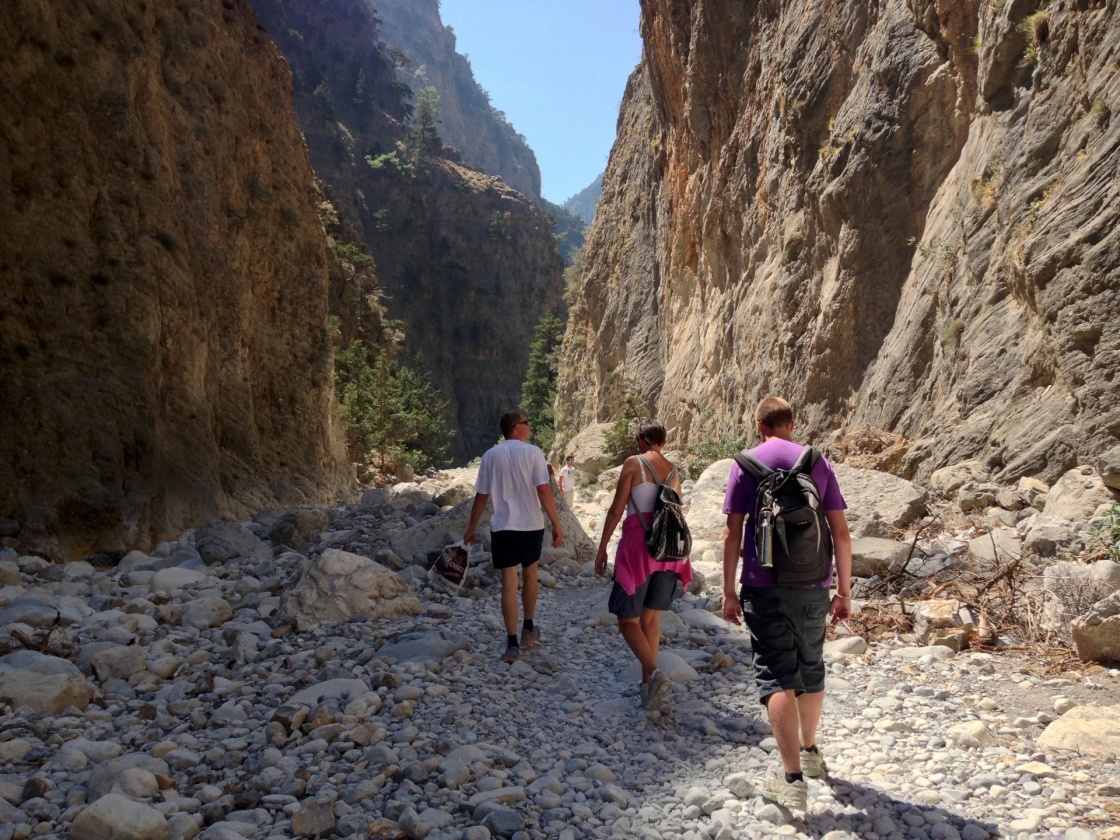Overview
In the dawn light at an altitude of 1,200 meters on the Omalos Plateau, a line of hikers gathers by a wooden gate known as Xyloskalo (the “Wooden Staircase”). Beyond it lies a path plunging into one of Europe’s most legendary canyons – the Samaria Gorge. Carved by a river between the White Mountains, Samaria stretches over 13 kilometers through ancient forests, past sheer cliffs, and down to the Libyan Sea. Hiking Samaria isn’t just a walk; it’s an immersive journey from mountain to sea, a chance to trace the footsteps of shepherds, soldiers, and even gods (if local myths are to be believed). By day’s end, you’ll emerge at a remote beach village, likely footsore and awestruck, having experienced the wild heart of Crete. Declared a National Park in 1962, the Samaria Gorge National Park is a must-do for nature lovers and adventure seekers visiting Crete.
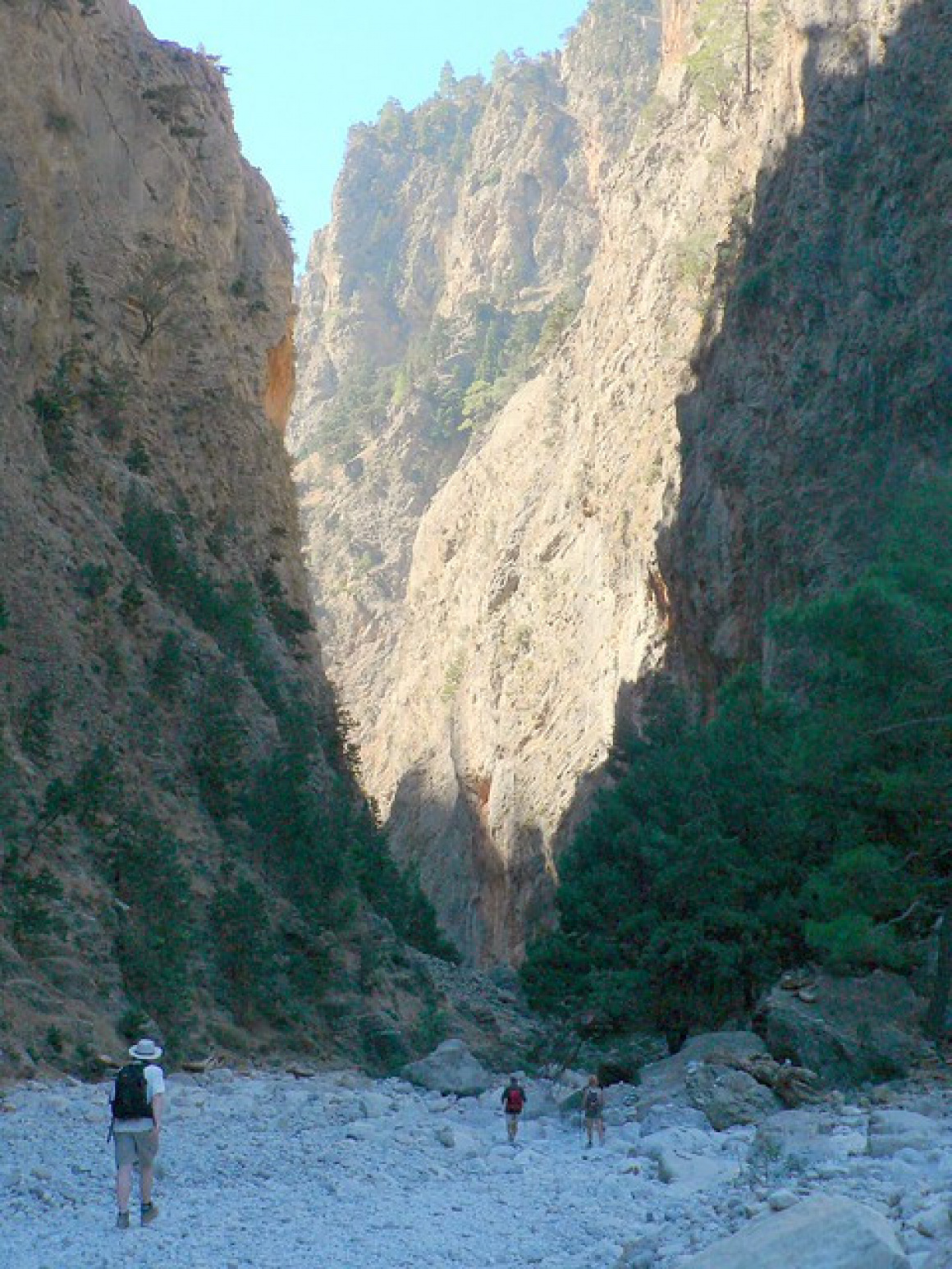
 'Along Samaria Gorge' - Attribution: lostajy
'Along Samaria Gorge' - Attribution: lostajyLength
~16 km from the start trailhead to the shores of Agia Roumeli (of which ~13 km is within the official national park boundaries). This usually takes 5–7 hours depending on your pace and number of stops.
Terrain
Mostly downhill (you descend about 1,200 m elevation). The path is rocky and uneven in places, with many makeshift steps and some wooden bridges crisscrossing the river. Good footwear is essential.
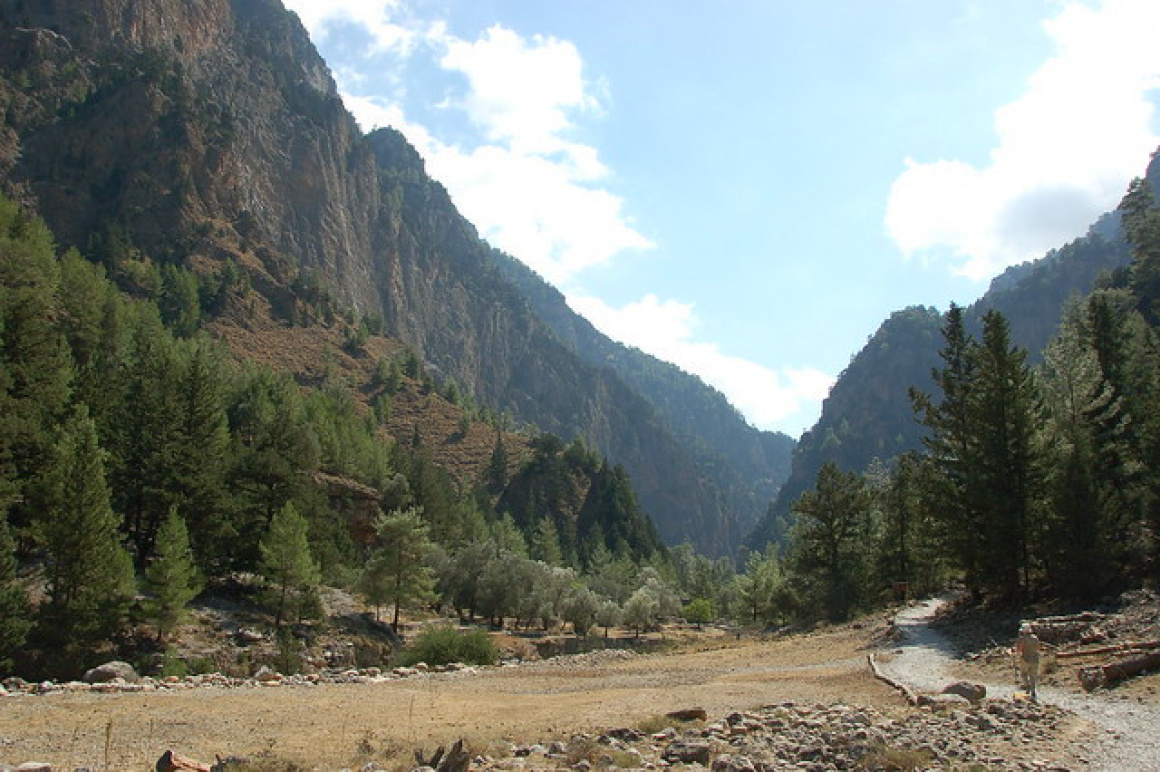
 'Samariá Gorge' - Attribution: x-oph
'Samariá Gorge' - Attribution: x-ophScenery
Utterly breathtaking and varied – high mountain pine forests at the top, narrowing to towering vertical walls (up to 300 m high) in the middle, and opening to a sunny river valley with oleander bushes near the bottom. The most famous point is the Iron Gates, where the gorge dramatically narrows to only about 3 meters wide with sheer cliffs on either side – you’ll pass through this natural stone hallway in awe.
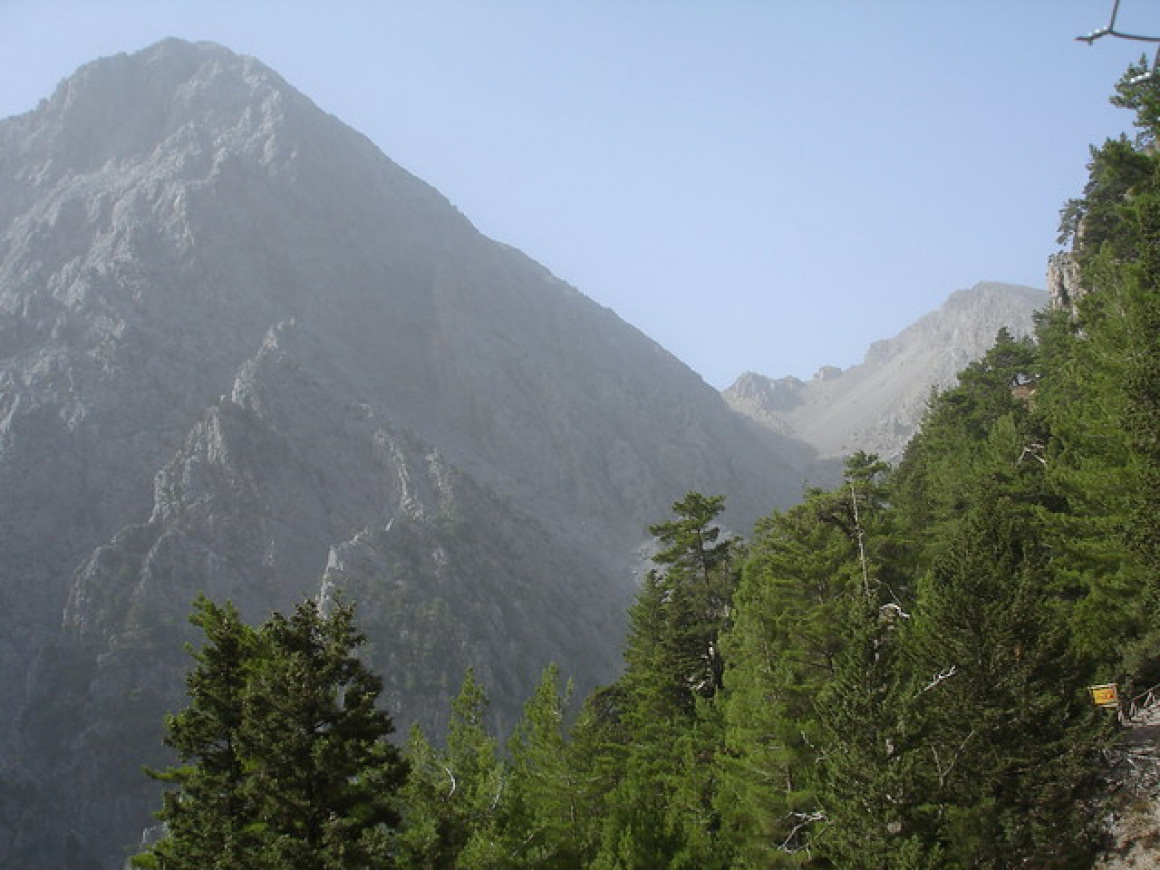
 'Samariá' - Attribution: sergei.gussev
'Samariá' - Attribution: sergei.gussevWildlife
Samaria is a refuge for many species. Most iconic is the Cretan wild goat or kri-kri, which you might spot balancing on a cliff or foraging by the path. These goats have curved horns and a shy demeanour, but in Samaria they’re quite accustomed to humans (do not feed them, though). The gorge is also home to endangered birds like the bearded vulture and plants found only in Crete. In spring, wildflowers bloom everywhere.
Season
The National Park (and the hike) is open roughly May to October (exact opening and closing depend on weather and water levels). In winter, the gorge is closed due to flash flood danger and falling rocks. The best time to hike is May–June or September, when it’s not too hot and crowds are thinner. At the height of summer, start very early to avoid the midday heat in the lower part.
Hiking Through Samaria – The Experience
The journey begins at Xyloskalo, aptly named because originally a wooden ladder helped people descend the first steep drop. Now it’s a series of zigzag stone steps that lead you down into the forested depths. The air is crisp and pine-scented at this early hour; far below, you hear the faint sound of water. As you descend, views back over the plateau are stunning, but watch your footing – this section is the toughest on the knees! After about 2 km of steep downhill, the trail evens out somewhat and you follow the river valley. Tall pines and cypresses provide shade. You’ll notice kilometer markers along the way, helping you track progress.
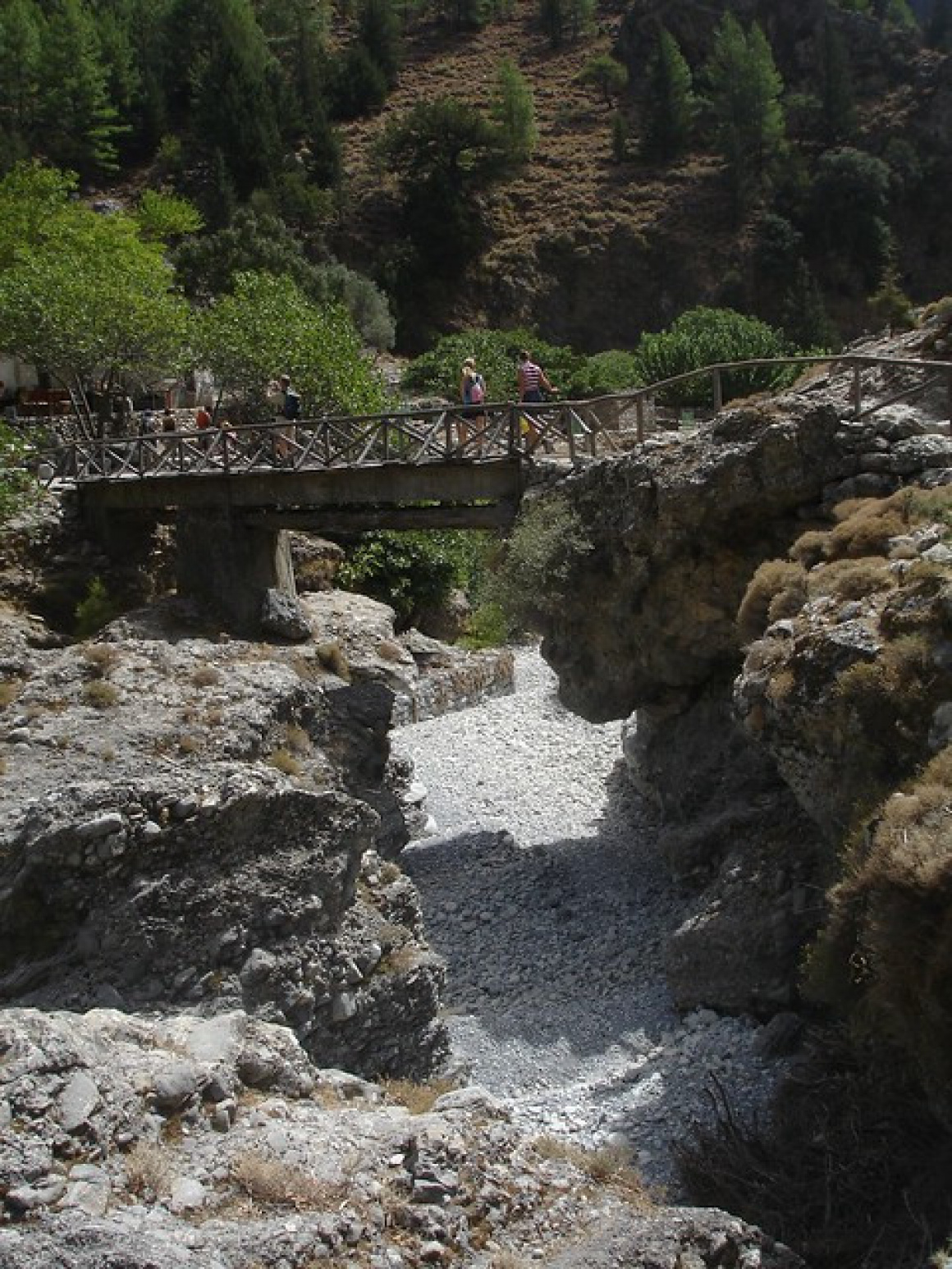
 'Samariá' - Attribution: sergei.gussev
'Samariá' - Attribution: sergei.gussevMidway, you come to the abandoned village of Samaria. It’s a poignant little ghost village – just a few stone houses, a small old church of Osia Maria (Saint Mary), and terraces overgrown with grapevines and fig trees. Until 1962, people actually lived in this isolated village, farming and tending goats, but the creation of the National Park required their relocation. The gorge and village take their name from the church of Saint Mary (Samaria being a local contraction of “Santa Maria”). It’s worth taking a short rest here under the shade; there are picnic tables and a spring. Imagine life in this remote place – cut off from the world except by mule paths through the mountains. During wartime, especially under Venetian and Ottoman rule, locals often hid in the gorge and Samaria village as a refuge from invaders. You can still see a few ruins and maybe friendly kri-kri goats nibbling nearby, descendants of those once domesticated.
Continuing on, the gorge narrows progressively. You’ll hop across the river stones (there are also wooden bridges at certain points). In early season, water runs plentifully, forming clear pools and cascades; by late summer, the river might be a trickle you can mostly walk beside. The Iron Gates mark the most dramatic section – suddenly the walls loom up to 300 m high while the gap between them shrinks. Walk single-file here and look up – it’s a humbling sight, as sunlight might barely peek through. Not far after this point, around the 13 km mark, you pass the park exit gate. Congratulations, you’ve traversed the official gorge!
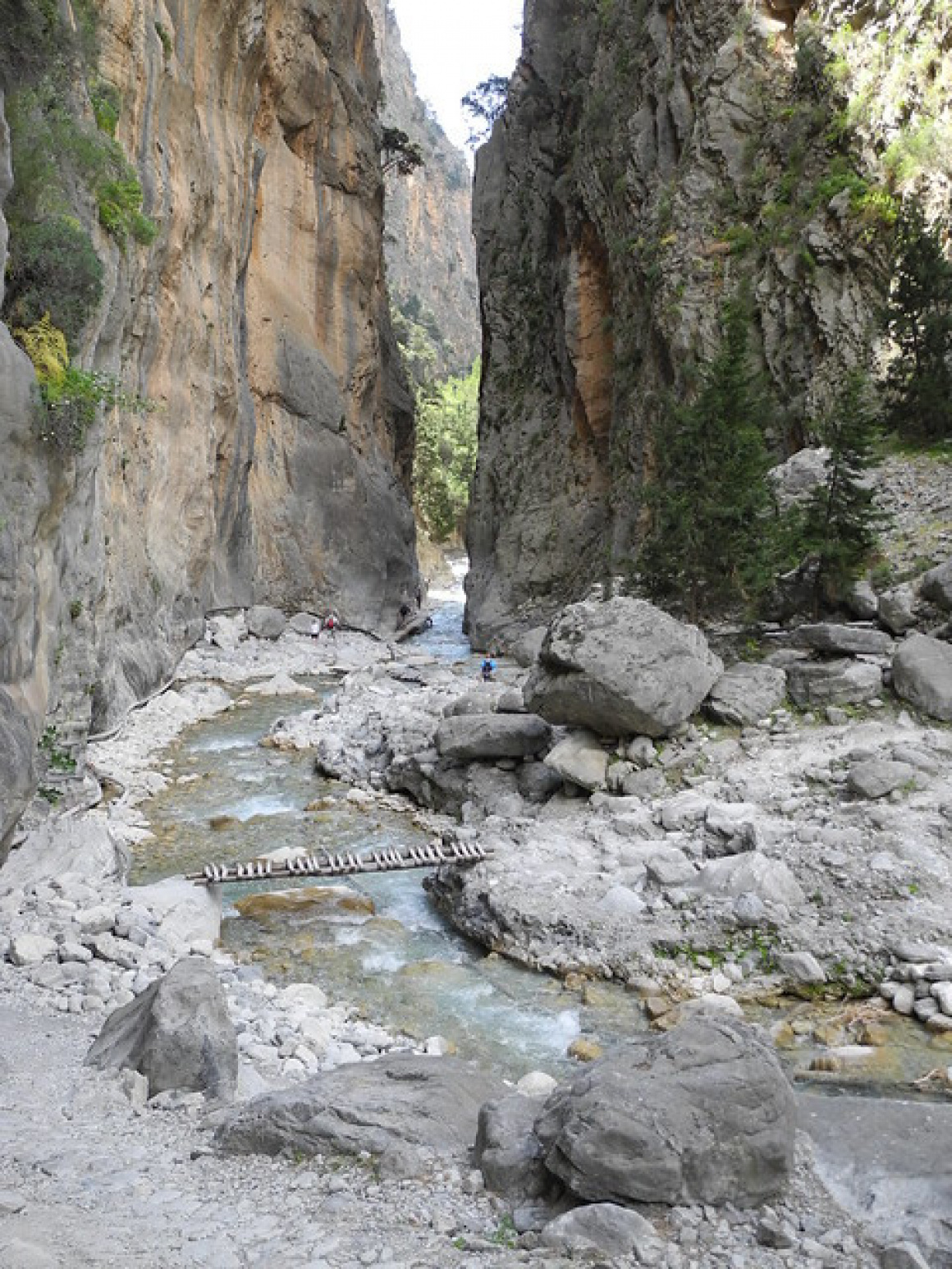
 'Samaria gorge' - Attribution: Shepard4711
'Samaria gorge' - Attribution: Shepard4711But your journey isn’t finished: you still have about 3 km more to reach Agia Roumeli on the coast. This last stretch is a relatively flat walk following the riverbed towards the sea. The surroundings open up, with oleander bushes and eucalyptus trees. You’ll likely feel the climate getting warmer and more humid as you near sea level. Then, suddenly, you arrive at Agia Roumeli – a tiny village that exists primarily to serve tired hikers! You’ll spot tavernas, rooms for rent, and the welcoming sight of the Libyan Sea. Many hikers head straight for the pebbly beach to kick off their boots and jump into the cool sea – a perfect reward after hours of dust and sweat.
Start Early
Aim to catch one of the first buses or be at the trailhead by 7:00–7:30 AM if possible. Early start = cooler temperatures, more shade in the upper gorge, and a head start before the big tour groups. Also, if you’re faster, you can have more time relaxing in Agia Roumeli before the afternoon ferry.
Gear Up
Wear good hiking shoes or boots. Sneakers can suffice if you’re sure-footed, but avoid anything with smooth soles. A hat, sunscreen, and layers (it can be chilly at the top in the morning, then very hot by midday down below) are recommended. Walking poles can be helpful for the downhill, though plenty manage without.
Water and Food
You don’t need to carry tons of water since the gorge has numerous fresh water springs along the way to refill your bottle – the water is cold and delicious. Do bring at least 1–1.5 liters to start and refill as needed. Pack some high-energy snacks or a light lunch (nuts, fruit, sandwiches). There are no shops or cafes once you start – not until Agia Roumeli. (There is a basic snack bar at Xyloskalo before you set off, and tavernas at the end.)
Facilities
Toilets are available at a few rest stops (basic but functional). Remember to carry out any trash you bring in. The park rangers are diligent about keeping the gorge clean and will often be the last to sweep through to ensure no one is left behind.
Health & Safety
Know your fitness – while people of various ages complete Samaria every day, it is a challenging hike. The most common issues are slippery footing and exhaustion. Pace yourself; there’s no rush. If you have knee problems, the long descent might be painful (consider hiking poles or even choosing a shorter gorge like Imbros Gorge instead). In case of emergency, there are wardens and even a few resident donkeys in the gorge that can assist with evacuations – but let’s hope you won’t need that! Also, do not attempt the hike if the park is closed or if heavy rain is forecast; flash floods can occur.
Wildlife Etiquette
If you encounter kri-kri goats, admire them quietly. Don’t try to pet or feed them (they might snatch food from an unattended bag though!). It’s a wild place, and part of its magic is experiencing nature on its terms.
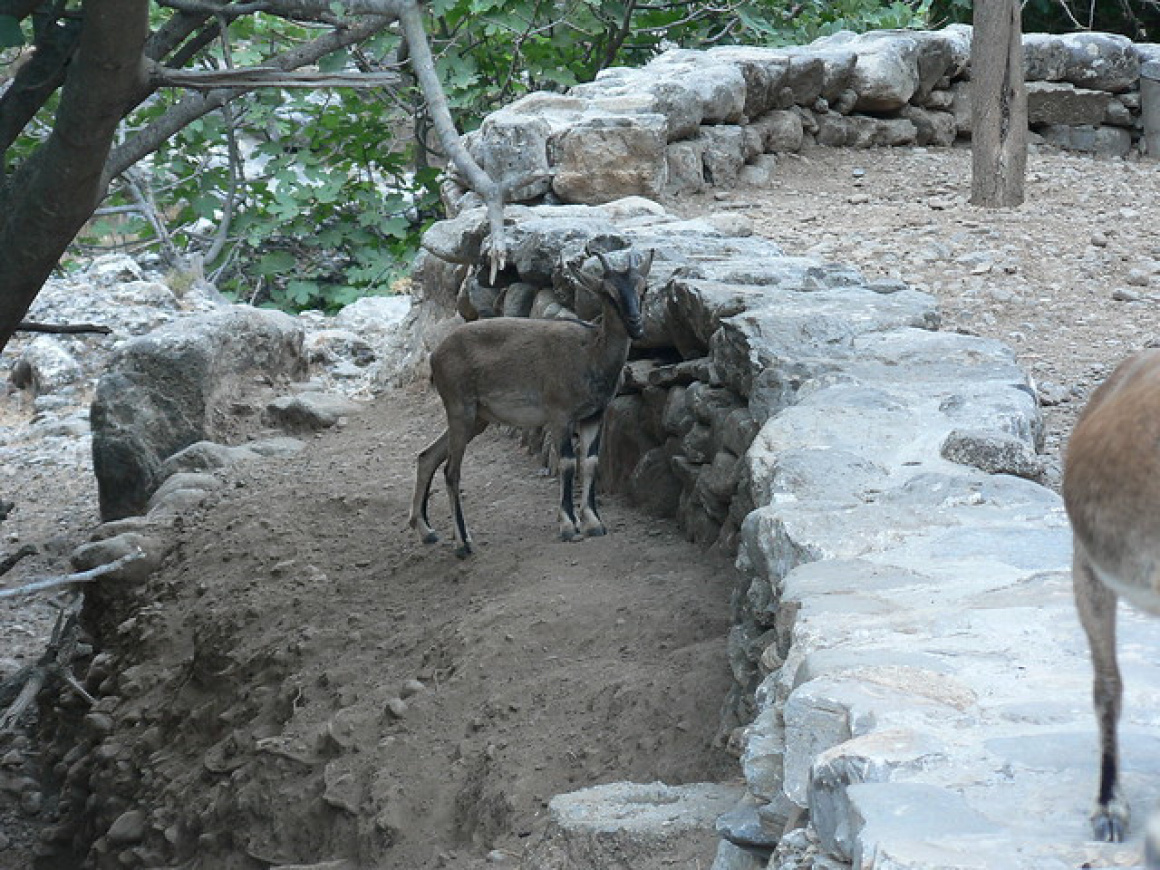
 'Descending into Samaria Gorge - Goat' - Attribution: lostajy
'Descending into Samaria Gorge - Goat' - Attribution: lostajyAfter the Hike – Agia Roumeli and Back Home
Agia Roumeli is a car-free village – there are no roads in except the footpath you came on. Thus, most hikers will leave by ferry boat. Typically, in the late afternoon, two ferries depart Agia Roumeli – one bound for Sougia for those heading toward Chania, and another heading to Sfakia for travelers continuing on to Rethymno. Many hikers opt for the Sfakia-bound ferry and then catch a connecting bus back to Chania or Rethymno. It might sound complicated, but it’s well-organized (just be sure to check the ferry times; usually there’s one around 5:30 PM daily in summer). While waiting for the ferry, enjoy Agia Roumeli. Have a hearty Cretan lunch – you earned it! Local tavernas serve cold beer, fresh-squeezed orange juice, and dishes like sfakianopita (cheese pie with honey) or lamb with greens. Take a dip in the sea; the beach may look plain, but that swim will feel heavenly. Some hikers opt to overnight in Agia Roumeli to avoid any stress – there are simple guesthouses, and the evening in the village is very peaceful once the crowds have left by ferry. If you stay, you can stargaze on the beach and listen to the mountain silence (with maybe a few distant goat bells).
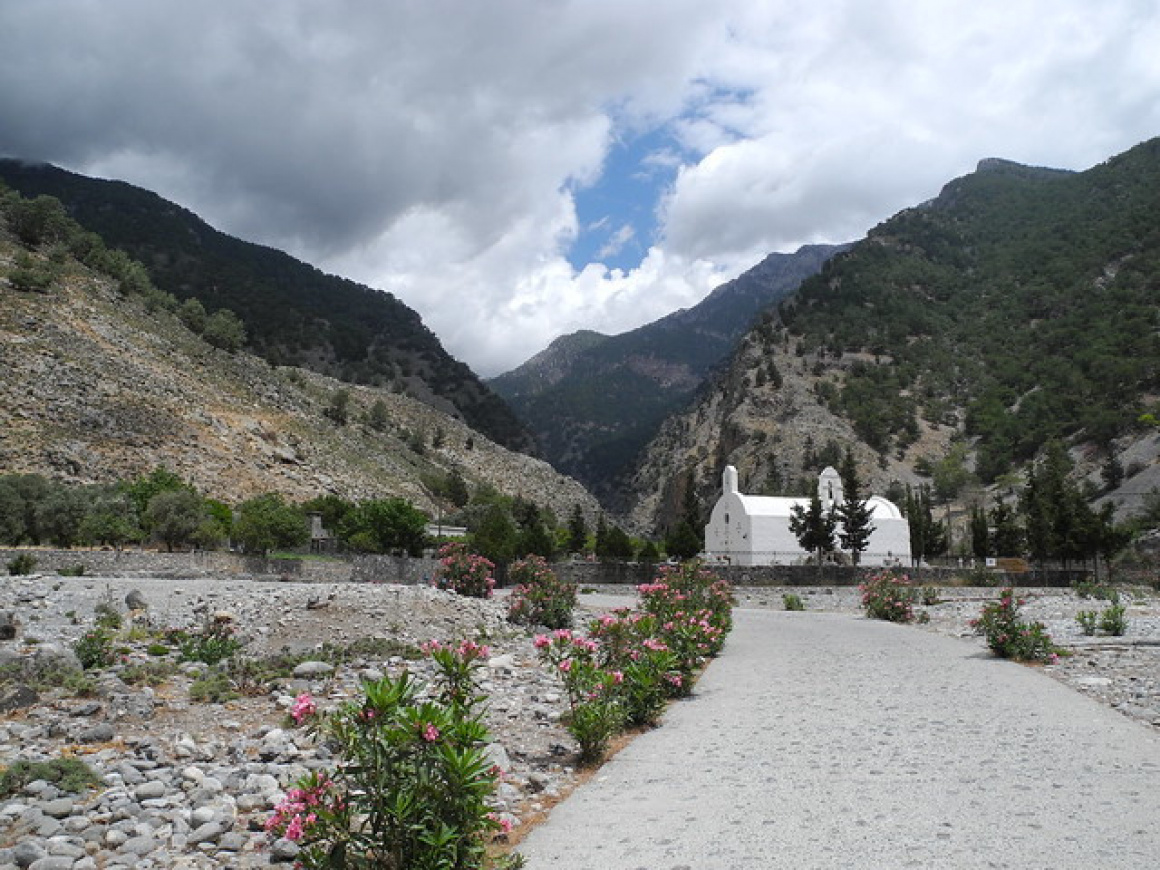
 'Church at Palea Agia Roumeli' - Attribution: Shepard4711
'Church at Palea Agia Roumeli' - Attribution: Shepard4711For those who loved Samaria and crave more, Crete has other gorge hikes too – like Imbros Gorge (shorter and easier), Aradena, or Agiofarago. But Samaria stands in a class of its own for its scale and variety. As you sail away on the ferry, watching the massive walls of the gorge recede, you’ll likely feel a mix of fatigue and accomplishment. You’ve not only seen one of Crete’s greatest natural wonders – you’ve lived it, step by step, from the cool heights of Omalos to the warm Libyan Sea. It’s an experience you’ll remember every time you think of Crete.
Where to Stay for the Samaria Experience
Many travelers exploring Samaria base themselves in Chania, using the early morning bus (about 6:00 AM) to Omalos. Chania Old Town offers the comfort of a city with plenty of hotels and easy logistics. If you prefer to be closer to the action, you can stay up on Omalos Plateau itself. There are a few rustic lodgings like Xyloskalo Cafe & Rooms or Omalos Village, which allow you to wake up right by the park entrance (great for being first on the trail). These are very simple accommodations used often by hiking groups, but the convenience is unmatched and the mountain atmosphere at night is lovely (cool air, clear stars).
On the other end, Agia Roumeli village has several small hotels (for example, Tarra Lodge or Agia Roumeli Hotel) in case you decide to stay after your hike. They are basic but clean, and nothing beats rolling out of bed to a quiet empty beach the next morning, with the gorge you conquered as your backdrop.
Another approach: stay in Sougia or Paleochora on the south coast, take an early boat to Agia Roumeli, hike Samaria uphill partway and back (some do this to see the Iron Gates from the bottom without doing the entire length), or simply to enjoy the remote ambience. But for the full one-way hike, Omalos-to-Agia Roumeli is the classic route (downhill).
Whether you choose comfort in Chania or the simplicity of mountain or seaside villages, make sure to give yourself a restful evening after Samaria. Many hikers end up sleeping very early that night! It’s a satisfying exhaustion, the kind that comes from a day spent in one of Crete’s most epic landscapes. And the next day, as your legs remind you of each step, you can proudly say you traversed the Samaria Gorge – a travel tale well worth telling.



